- Email:hello@webexcept.com
09 Sep

This article is all about on-page SEO.
In this article, you will cover the most effective ranking factors for SEO:
- On-page SEO Basics
- Content
- Optimize your content
- How to optimize your CTR
- Advanced Strategies to On-Page SEO
If you want to boost your ranking and earn more traffic
You have to practice these tactics step-by-step.
Let’s get started.
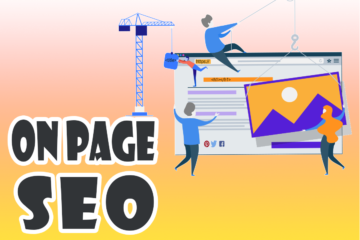
What is SEO?
SEO is a process that lets you optimize all your website pages to help search engines crawl and cover your pages in order to enhance your ranking and get traffic.
Search engine optimization (SEO) is the most important thing that you should pay attention to.
If you want to push your business in the right way.
Practice these three best parts of SEO.
- Technical SEO
- On-Page SEO
- Off-Page SEO
However, this blog post is all about on-site SEO.
Therefore, during this blog post, here are the essential steps you will cover.
Step #1: On-Page SEO Basics
What is On-Page SEO?
Called also on-site SEO and knows as a process that lets you optimize all the elements of your website.
In other words, it is a practice to optimize your website for search engines to improve your website ranking.
Why On-Page SEO is important?
It is the main pillar of SEO and without it, you are not going to rank on google.
Search engines like Google focus on this factor to help their search spiders understand your website content and what is all about.
To rank your website on the SERPs, your website should be optimized for any factor.
Two main on-site SEO benefits:
Benefit #1: Boost Your Website Ranking
Let us say your main keyword is:
“Lose weight”
As you see from the screenshot below, the top 10 websites that are ranking on the SERPs optimized around the same keyword.
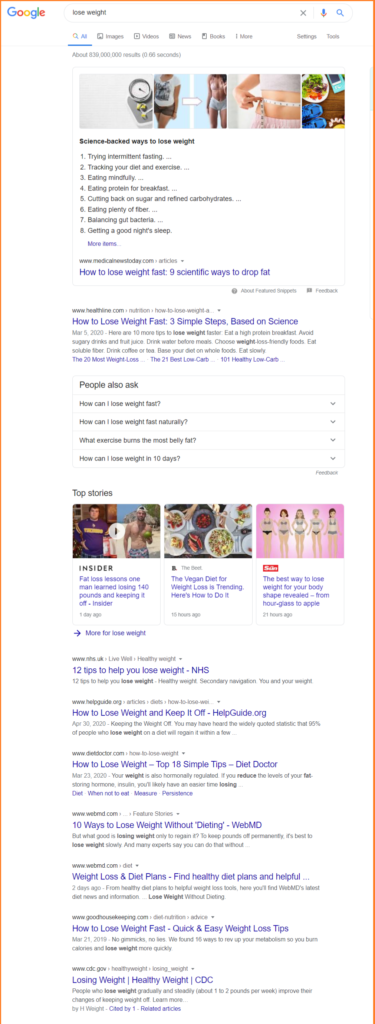
As you see from the screenshot, each website optimized (Title, Description) is optimized around the same keyword.
To understand, I am talking about Click-Through-Rate (CTR) that is the essential factor of SEO.
Benefit #2: Earn Organic Traffic
Top 10 websites ranking on search results earn massive organic traffic compared to other websites.
If you have an online store that sells products and you are ranking from the top 10.
You have more chances to generate more leads and conversions.
This is the power of SEO.
Note:
On-site SEO is not enough to rank well on google.
Other SEO ranking factors help to rank:
- Domain Authority(DA)
- Off-page SEO(Link Building)
- E.A.T
- Lots more
Maybe, you could rank from the top 10 search results, if you master the keyword research process.
By the way.
Check out this helpful resource is for keyword research.
This is a list of essential elements you should take into account to rank well (especially for brand-new).
- Target long-tail-keywords
- Analyze your competitors
- Create unique & helpful content
- Satisfy user intent
- Lots more
How to do On-Page SEO?
In fact, to optimize SEO step by step in the right way there are many aspects that you have to take account.
For this purpose, this topic is about on-page SEO techniques and how it works.
Therefore, you will cover anything you need to do to rank well and drive as possible as of organic traffic.
Now, it is time to show you how to optimize your content.
Step #2: Optimize Your Content
Content is the king for search engines, like (Google, Bing, Yahoo, etc.)
If your website offers amazing content without optimizing it.
(It is not visible).
For this reason, it is important to optimize your content.
On-Page SEO Checklist
This is my new checklist to on-page SEO steps you need to do.
Factor #1: Title
Optimize your blog post title (headline) around your main keyword.
This means:
So, put your target keyword in the title (First, Middle, or End).
However, it is better to put it in the first of your headline.
Let’s say your target keyword is:
“Local SEO”
By using Yoast SEO Plugin to optimize your content.

Factor #2: Modifiers
In order to highlight your title and make it more catchy.
It’s better to use modifiers in your headline.
- Best
- 2020
- Guide
- Fast
- Quick
- Etc.
For example.
-Best SEO Audit Tools That Any Marketer Need to Know In 2020
-The Ultimate Guide to SEO
These modifiers also called powerful words that help you to attract the attention of visitors.
In fact, to make your content catchy, you should invest your time in copywriting.
Factor #3: Wrap Your Title Using H1 Tag
According to the Google algorithm and (many other studies), any content should contain one H1 tag.
It is for the title (Only).
So,
If you are using WordPress as your CMS, it shows you a list of items.
Choose the best tag for headers and subleaders.
Here is an example.

Note:
We are using Elementor as WordPress Website Builder.
Factor #4: Wrap Your Subheading Using H2 Tag
What I explained in the last point (Factor #3) is the same thing for this factor.
So, wrap your subheading using the H2 tag.
Let me clarify something.
Your body copy contains more and more subheadings.
The most important thing is to wrap your subheading by using a different tags (H2, H3, and H4).
Another thing you should take into account is to include LSI Keywords into your subheading.
LSI (Similar Terms to your target keyword).
Most SEOs insist to wrap heading and subheading using only
H1… H4.
To clarify:
If you are using WordPress, it generates you a list of tags.
Let us take an example.
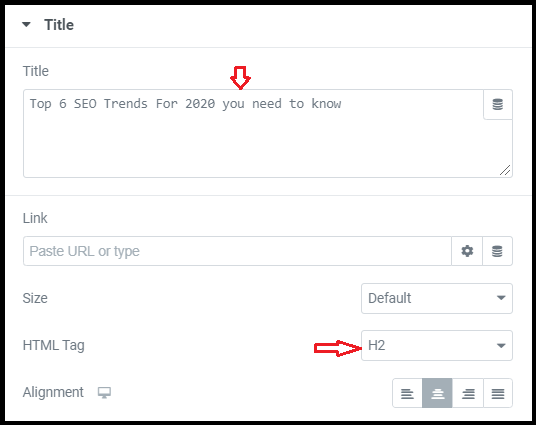
It is better to include LSI into your subheading in order to help search engines understand your content what about and improve your ranking.
Factor #5: Use Infographic
Your content without multimedia is nothing.
To illustrate that and make it visible, easy to understand.
You have to dazzle your content with the infographic, like:
- Images
- Videos
- Diagrams
- Etc
Factor #6: Include Your Keyword in the First 100 Words
Factor #6: Include Your Keyword in the First 100 Words
It is important to include your main keyword in the 100 words of your introduction
For example:
One of my posts, my target keyword is “Best CMS for SEO”
Therefore, as you see from the screenshot below, I have integrated it into my first introduction.

Why you should drop your keyword in the first of your introduction?
One of the SEO factors requires putting your keyword in your introduction.
Why?
Because when you put that keyword in the first, this technique helps search engines to cover and understand your main topic.
Factor #7: Use Responsive Design
Let me clarify something, User Experience (UX) is all for your business.
Without UX, your website won’t rank well on different search engines.
For this purpose, it is necessary to keep this factor in your mind.
To improve user experience, your website should extremely be responsive and mobile-friendly.
Mobile-Friendly:
Most users use their mobile phones to search and find the right information.
So, if your business does not mobile-friendly, it is hard to keep visitors to spend more time on your site.
To make sure your website is mobile-friendly or no.
All you need to do is just pop in your website URL into this tool and it shows you the result (does your website responsive or NO?).
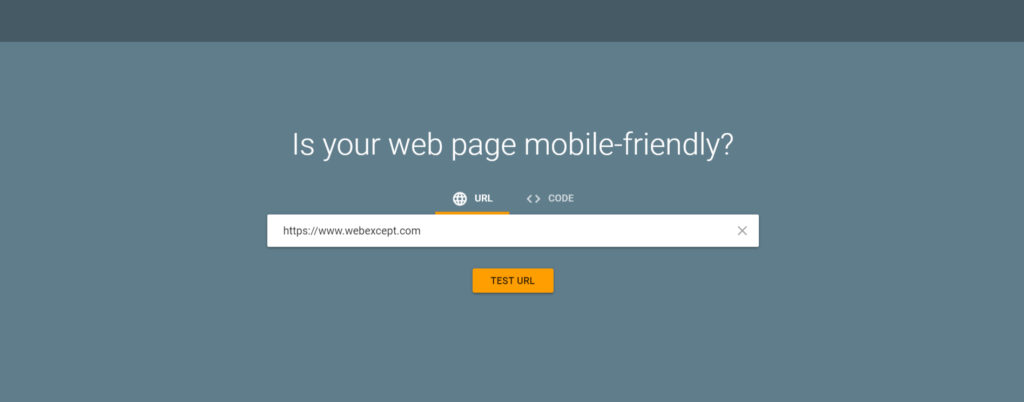
After Processing:
It shows you a page like this.
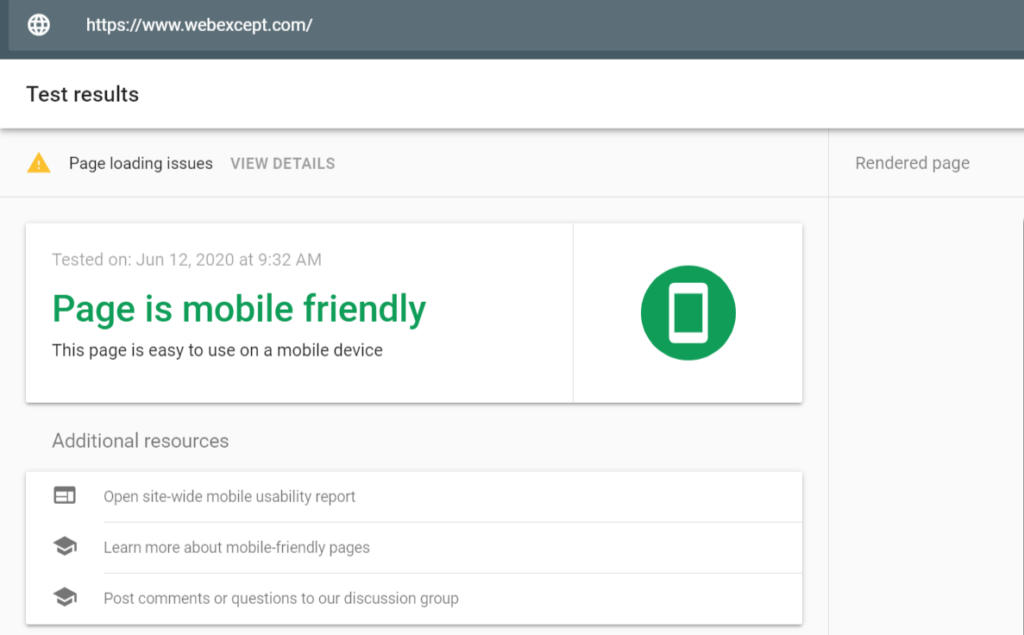
Factor #8: Use LSI Keywords
What are LSI Keywords?
LSI stands for Latent Search Indexing.
Therefore, LSI keywords are the terms related to your website topic.
That means:
All synonyms that are similar to your main keyword.
How do I find my LSI Keywords?
Just type in your primary keyword into Google search and scroll straight to the bottom of your webpage.
Like this.
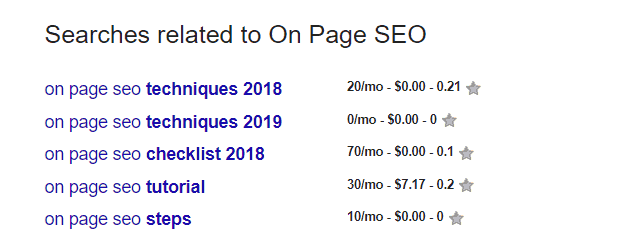
Why is LSI Important?
It is better to use LSI Keywords in order to help Google understand your content and determine your web page's relevancy.
Factor #9: Image Compression & Optimization
The first thing you have to do is to compress your images before import them.
Why?
Because if your website does not load fast, you have a critical problem, and that impact on some metrics like.
- Time on site
- Bounce Rate
- Lots more
So, take care of this thing.
In addition, you should optimize your images around your target keyword.
In fact,
If you are using WordPress, Yoast SEO helps you to do that.
(You can use also Rank Math).
In other words, it also suggests a number of images to optimize and which image needs to include your keyword and is not.
All this is to avoid over-optimization.
How to that?
The process is simple.
All you need to do is to add your focus keyword in any Alt image tag (Alternate Tag).
For example:
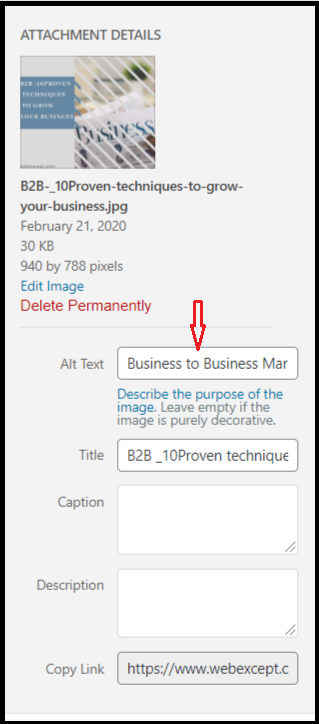
In addition, when someone wants to find information on Google using Google images, this Alt tag helps search engines to find your relevant images and show them in the search results.
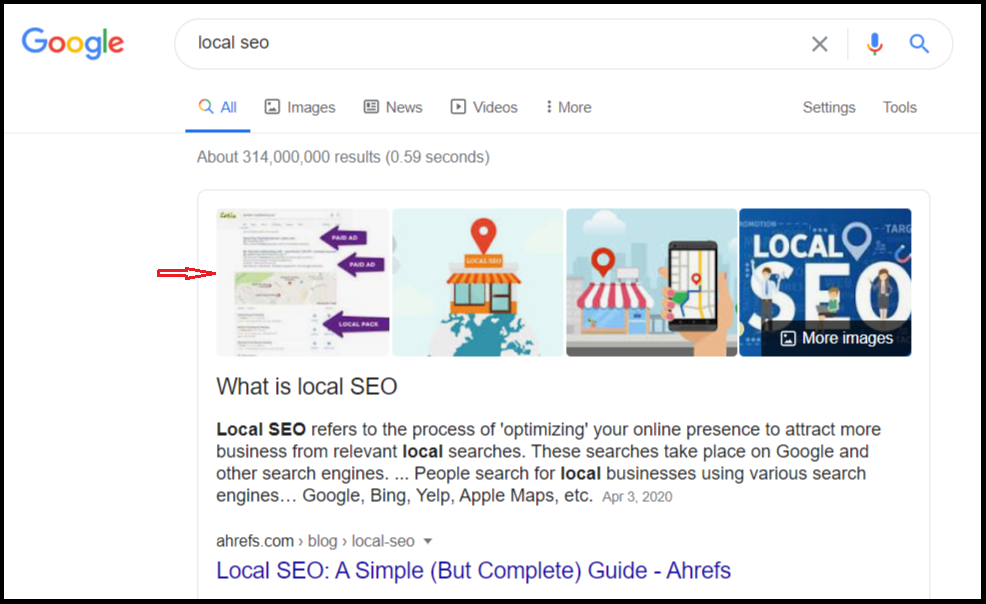
Factor #10: Internal Links
Another key you should pay attention to is the internal link.
Without it, you cannot increase your time-on-site and improve the web page's relevancy.
On the other hand, it helps users to navigate from page to page and discover more topics.
That means visitors spent more time on your website.
Internal links benefits:
- Help users to discover other services and topics.
- Increase Crawlability.
- Help to rank on Google.
- Lower Bounce Rate.
Here is an example:
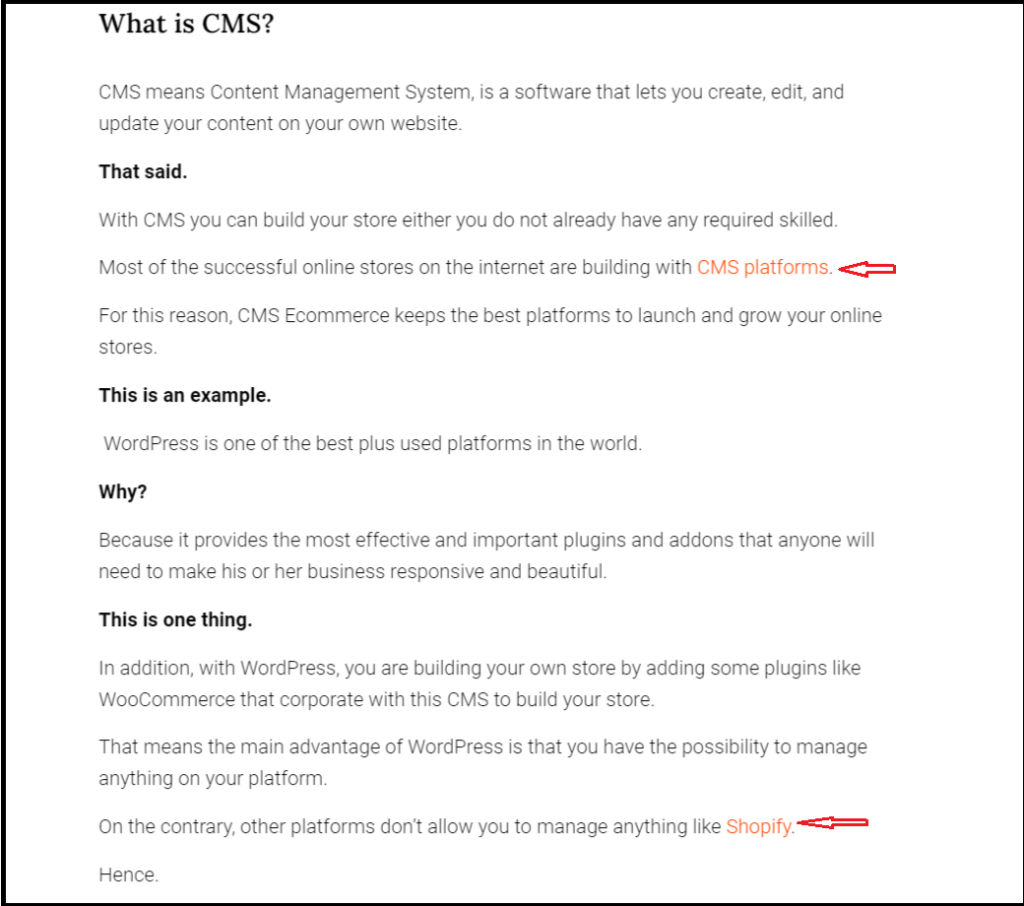
Factor #11: Site Speed
Believe it or not, site speed is one of the factors that can make or break your ranking.
Because many studies insist to speed up website speed to help visitors to navigate and find what they are searching for.
This is the best part.
The next part is:
If you have an online store and your website slowly loads.
Be sure your business will lose more visitors.
Especially, in the step of checkout, your potential clients bounce back definitively.
Therefore, to make your website speed
Here are the most essential points that you should to optimize:
- Use a CDN
- Compression images
- Hosting
Use these amazing tools to check out your website speed.
Pop in your website URL and it shows your current score page for desktop and mobile.
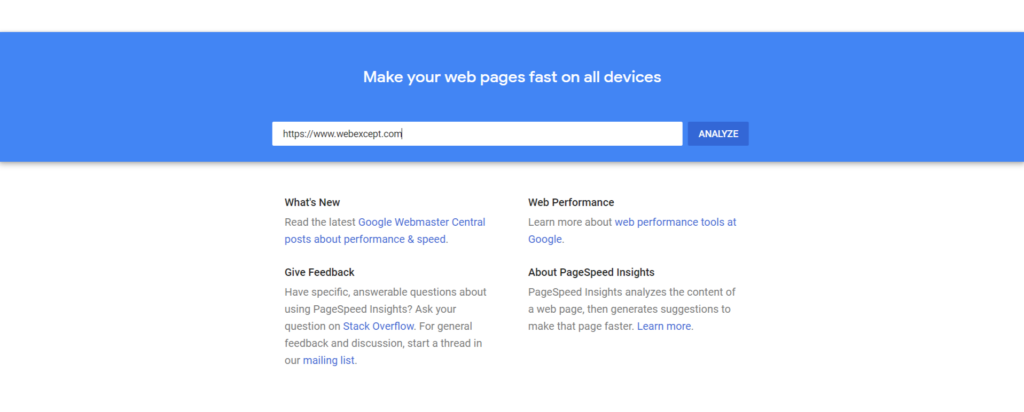
With GTmetrix, you need only type in your URL and lets it analyze your website.
After the processing.
It shows you what you need to improve.
Here is a good example.
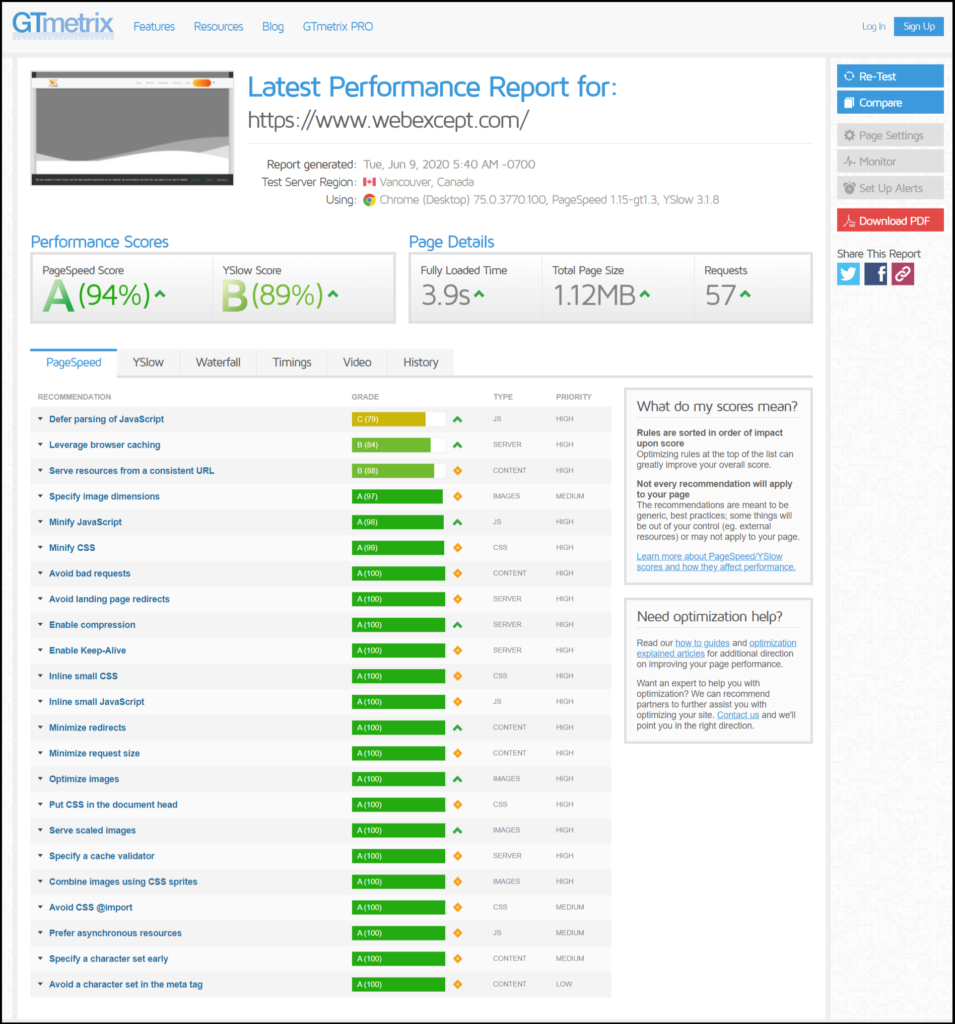
Factor #12: Sharing Buttons
To boost your ranking and get more links, it is better to embed sharing buttons into your website.

Make sure to use them on your page to help users sharing your content on different social media.
Factor #13: Content-Length
It is no secret to say the content is all.
Google prefers those websites that have amazing content.
In other words, the content that combines these elements below.
- Unique
- Relevant
- Helpful
Actually, Google focuses on E.A.T (Expertise, Authoritativeness, and Trustworthiness) and E.A.T is a part of SEO Trends 2020.
In addition, Content-Length is so important to boost your ranking on SERPs.
(Why)
Here is the deal:
Because if you want to rank from the top 10 search results.
First, you should especially analyze your competitor’s count words
In other words.
To outrank your competitors on the SERPs, Content quantity and quality are one of the best ways to focus on.
To make sure what are the average numbers to rank.

As you see from the screenshot above, average words to rank on Google is 1890.
According to Backlinko.
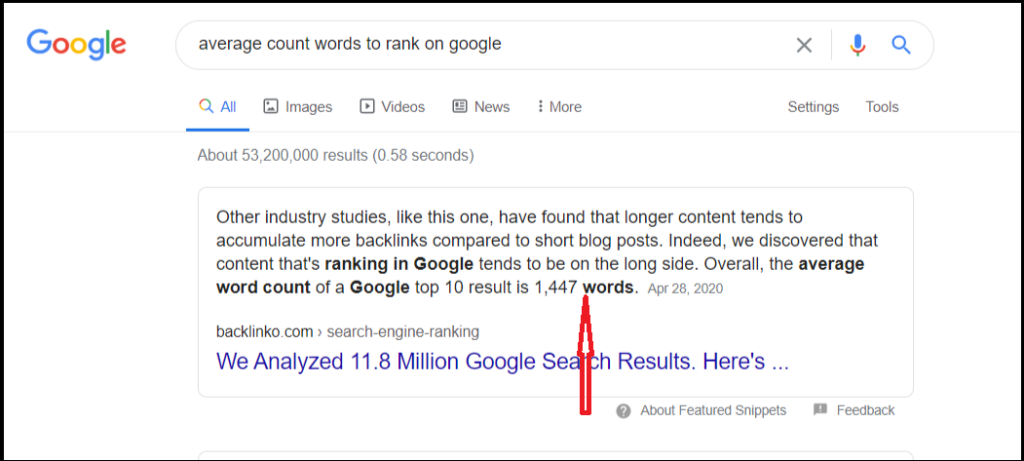
Therefore, the more you are creating amazing content with quantity, the more you have more chances to rank well on Google.
Step #3: Content
Tactic #1: Unique & Valuable Content
Do you know the value of content?
Needless to say, Content is the first part that matters more for Google.
Which means,
If your content is not that content helpful, unique, and valuable, you are not going to rank well.
Tactic #2: Focus on Readability
To help your visitors spend more time on your site, you need to create content that easy to understand, simple, and free from grammatical errors.
This is one thing.
Another thing is readability.
It is so important for these metrics (Time on Site, Bounce Rate).
That means.
the content that keeps users spent more time and read as possible as, it indirectly increases these signals.
- Increase time on site
- Reduce bounce rate
- Get more shares
- And more
Tactic #3: User Intent
To be clear.
If your website respects all factors need and you are ranking on Google from the top first search results.
However, if you do not take into account search intent, you will not get more traffic.
To explain more about what I am talking about.
Let us clarify something.
User intent (Search Intent) is the purpose of the user query.
In other words, what is the main goal of the search query of the user?
There are 4 types of user intent are informational, navigational, commercial, and transactional.
To learn more about Search Intent this resource is helpful from Backlinko.
Tactic #4: Optimization CTR
Click-Through Rate (CTR) matters more for SEO.
On the other hand, good CTR sends a message to Google that your website gets more clicks.
To explain more,
Good CTR means (high impressions and high clicks).
For this purpose, it is indispensable to optimize (CTR) for two reasons.
- Boost your Ranking
- Drive traffic
Here are the most important factors you need to optimize.
- URL
- Title
- Description
- Rich Snippets
- Favicon
Now, it is time to break down into each point.
#1: URL
It is necessary to optimize your URL.
That means.
Your URL should be an SEO-Friendly URL.
Now, the optimization of your URL matters more for Google.
Therefore, your URL needs to be simple in order to help search engines understand your main topic
Here is a breakdown.
- Include your target keyword in URL
- Keep it as possible as short
Here is a good example.
One of my posts optimized around “best CMS for SEO”.
As you see, my blog post URL is short and simple.
Here is another example.
#2: Title
Your title tag keeps one of the best important parts that you should pay attention to.
If it does not contain powerful words to catch the attention of visitors, your blog post or your web page will not get more clicks and visitors.
This means your webpages will not get more reach and engagement.
Therefore, it is necessary to analyze using different tools (you will those tools later).
Why you should optimize the title tag?
The purpose of the title tag is to make visitors learn the first sentence of your topic.
And the same thing for the first sentence is to make them read the second sentence.
So, include your keyword in your headline.
If you use WordPress, Yoast SEO helps you to do that.
Here is an example.
My target keyword is “SEO trends 2020”

Here are powerful tools to analyze your headline.
These tools help you to analyze your headlines and make them catchy.
Here is a list of powerful words to make your headline more emotional.
As a result:
An amazing headline can boost more your CTR.
#3: Meta Description
Amazing meta description can help more your CTR.
It is essential to optimize it with include your main keyword into it.
If you do not optimize your Meta description, Yoast SEO will notify you.
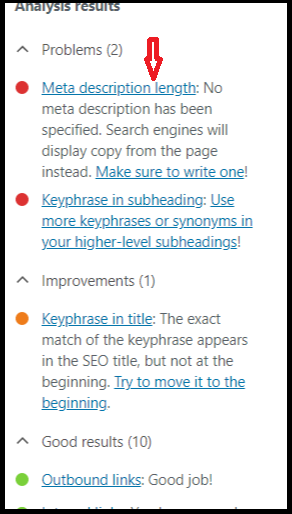
Note: Meta Description also helps to improve CTR and improve your ranking.
#4: Rich Snippets
It is necessary to implement rich snippets to increase your chance of getting more clicks.
The most important thing to do is choosing snippets type.
- Star Rating
- Recipes
- Organization
- Video
- And more
So, choose those types and implement them in order to improve your CTR.
It indirectly boosts your ranking.
Note: this process called structured data.
How to implement Structured Data?
There are two ways to implement that:
- Schema.org
- Plugins(If you use WordPress)
To confirm is all data has been correctly implemented, you can use this tool Structured Data Testing Tool.
#5: Favicon
Favicon is so important and influence on your CTR.
(How)
Here is the deal.
Google shows favicon in both cases (Desktop SERPs and Mobile SERPs).
That means, it is an essential element to enhance your CTR.
This is one thing.
The second thing.
It helps visitors to find easy your URL on the SERPs.
To illustrate that with a real example.
No Favicon:
With Favicon:
Step #4: Advanced Strategies to On-Page SEO
In this last step, you will cover advanced actionable strategies and tactics to on-page SEO factors.
To be clear, if you want to rank your business on search results. It is necessary to practice these proven factors below.
- #1: Focus on Voice Search
- #2: Use Featured Snippets
- #3: Focus on E.A.T
With these ranking factors in mind, you will boost your ranking.
So, let us explain more…
Here’s a breakdown.
1) Voice Search
Voice Search is one of the most factors that Google loves.
Because it helps search engines to find data and push it on the SERPs.
Therefore, here are powerful techniques to optimize your website for voice search.
- Implement FAQ Schema & use FAQ-Pages
- Use Long-Tail Keywords
- Your Website needs to be mobile friendly & speed
Pro Tip:
To find long-tail keywords as a list of questions, the best tool is: Answer the Public.
2) Featured Snippets
Featured Snippets is another solution to improve your CTR.
In fact, you have to implement that to profit as possible as from its benefits.
Before that, I will show you types and benefits.
Features Snippets: Types
These are the most common types of very used.
- Ordered List
- Unordered List
- Table
- Definition Box
Now, it is time for me to show you the amazing benefits of F.S.
Features Snippets: Benefits
- Get clicks
- Increase your CTR
- Bring more traffic
To understand more about what I am talking about. Especially, these types cited above.
Let me illustrate that by examples.
Type #1: Ordered List
It is important to organize your points or your outlines as a list of subheadings like this.
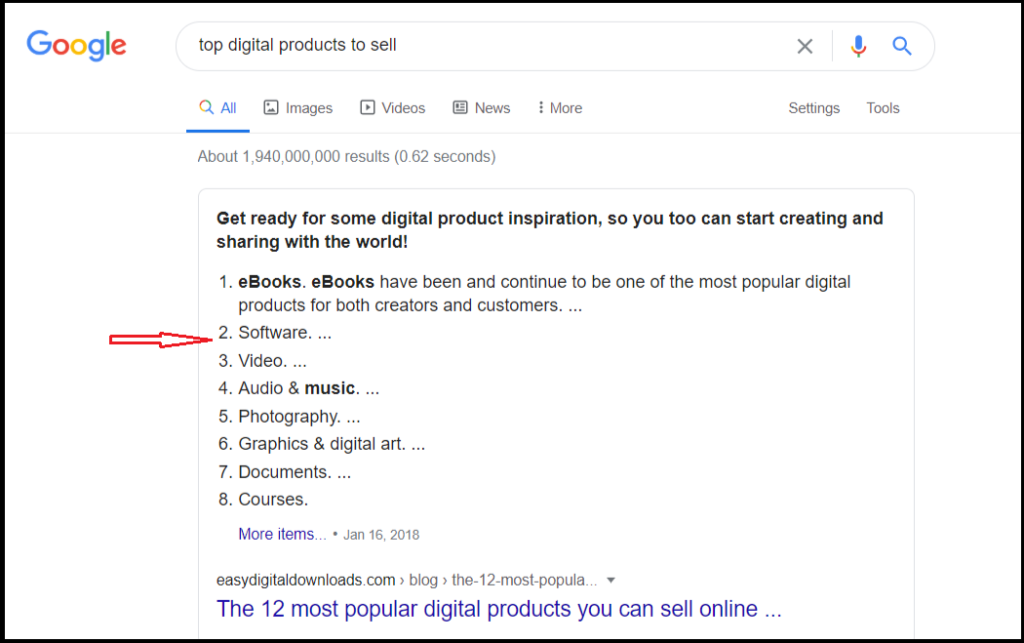
Type #2: Unordered List
It is similar for (Unordered List).
As you see from the screenshot below, this type helps search engines show your list as a list of items.
For this purpose, it is better to wrap your essential elements into subheadings.
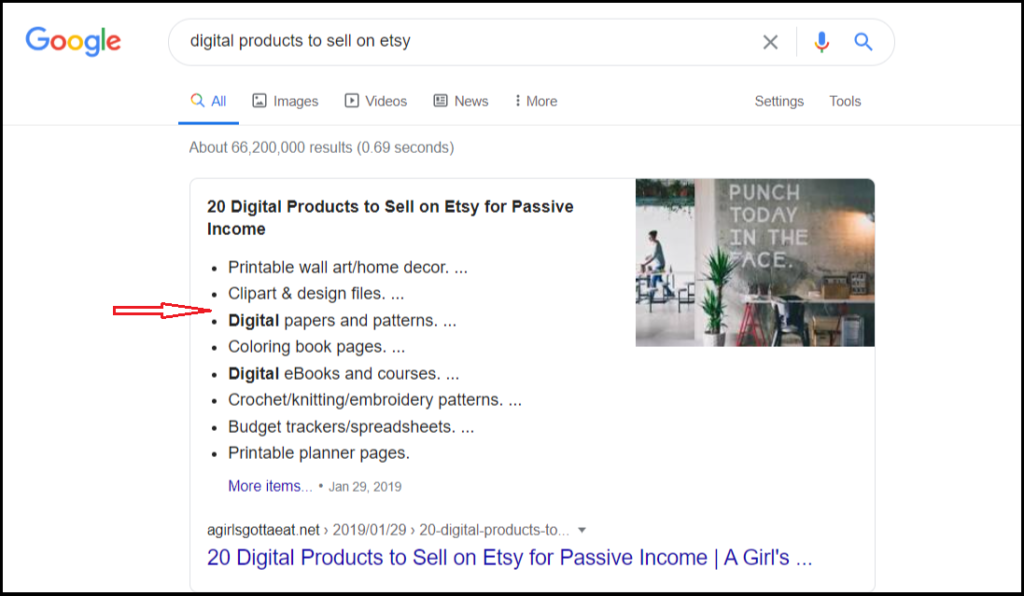
Type #3: Table
In most cases, Google could show your results as a table of columns.
This means each column name contains other items.
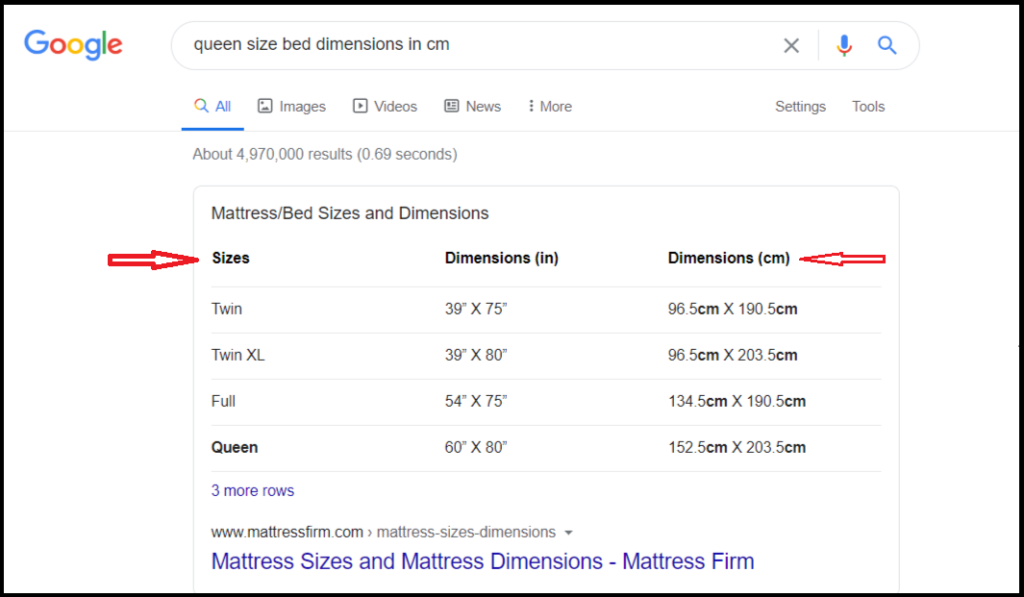
Type #4: Definition Box
Definition Box is also another type of Featured Snippet that Google mostly generates for user searches.
That does not mean, if you have written a definition, Google will automatically show it.
It is the contrary, your definition needs to be relevant and satisfy user intent.
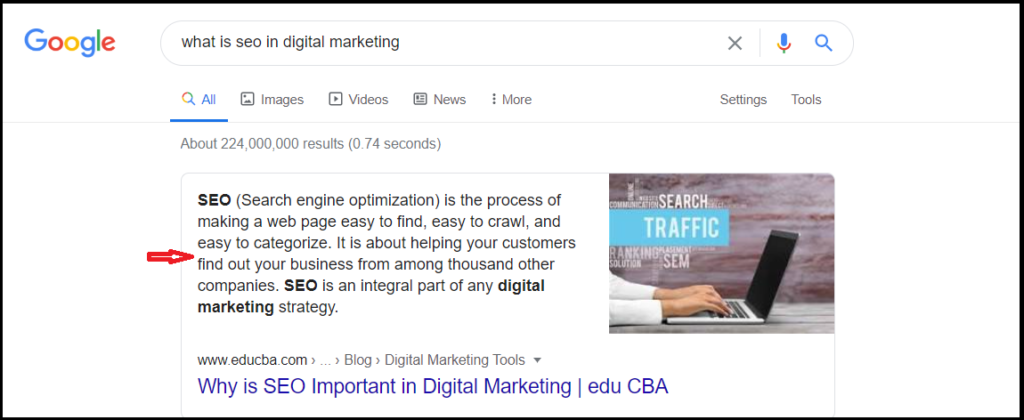
3) BERT (E.A.T)
Actually, Google tends to generate content that will be helpful for users.
According to their searches intent and their needs.
For this reason, Google concentrates on the BERT algorithm that it is all about on user intent.
In other words, to move your content to the top 10 search results.
Your content needs to be:
- Relevant Content
- Unique Content
- Content that satisfies user intent
In addition, Google also uses E.A.T (Expertise, Authoritativeness, and Trustworthiness) as the main metric.
Conclusion
To take your place from the top 10 search results, optimization one part of SEO doesn’t enough.
However, it is an important factor to do.
SEO is not only an on-page SEO. However, it is a bunch of other factors.
- Off-Page SEO (Especially Link Building)
- Technical SEO
- Content Promotion
- And more
Therefore, what Do you think about this SEO strategy?
If you have any questions about that, let me know by leaving a comment below.




5 Comments
ayoub elghomari
you’re welcome
ayoub elghomari
Thanks for reading this article, I hope you found it helpful
Darell Timperman
everything’ve written. Just my opinion, it would make your posts a little bit more interesting.